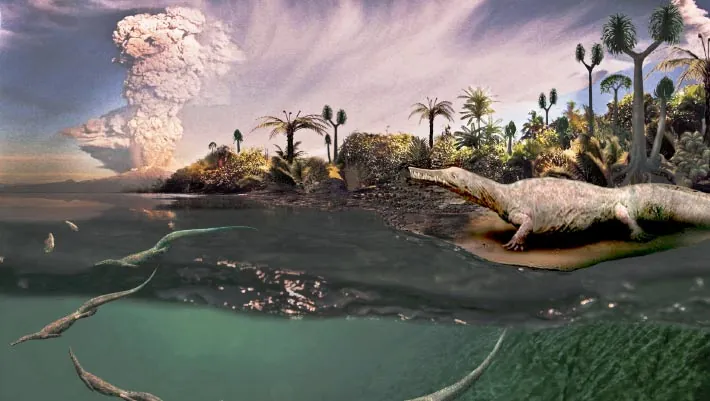
Paleontologists Unveil the Astonishing Discovery of Giant Mesosaurs: What This Means for Earth’s Ancient Waters
2025-01-03
Author: John Tan
A New Perspective on Size and Evolution
The newly discovered specimens include several incomplete skulls and associated bones, suggesting that mature mesosaurs may have reached sizes over twice that of previously known adults. Dr. Graciela Piñeiro from the Universidad de la República and her colleagues examined these remarkable finds, noting that mesosaurs had once been classified as small to medium-sized aquatic amniotes. However, this discovery could redefine our understanding of their size and ecological role.
Dr. Piñeiro’s team pointed out, "These new finds underscore the case for gigantism among mature mesosaurs, which raises questions about their living environment and competitive dynamics." The fossils, sourced from the Mangrullo Formation in northern Uruguay, were assessed alongside a large number of specimens of Mesosaurus tenuidens and revealed a staggering increase in average body size.
What Made the Mesosaurs Unique?
Mesosaurs were the earliest known aquatic reptiles to have returned to a full marine lifestyle from their terrestrial ancestors. Their elongated bodies and distinctive long-snouted skulls equipped with fine, needle-like teeth made them adept hunters in their aquatic habitat. “The exceptional preservation conditions of the Gondwanan shale and silt deposits have yielded nearly complete skeletons, allowing us to gather valuable data about their morphology,” added Piñeiro.
The team also documented various growth stages of mesosaurs, with hatchlings measuring around 10 to 12 cm (3.9-4.7 inches) and adults potentially reaching lengths of up to 2.5 m (8.2 feet). This newfound evidence allows scientists to better understand the life cycle and evolutionary adaptations of these extinct reptiles.
Environmental Pressures and Extinction Theories
The researchers further examined the implications of Bergmann’s rule, which suggests that the body size of animals increases in cooler climates. However, this principle alone does not fully explain the arrival of particularly large mesosaurs in the Mangrullo Formation. Instead, the researchers concluded that the large size variants are likely linked to their ages and individual growth patterns, rather than climate factors.
They also noted possible mass mortality events, potentially triggered by volcanic activity in the region linked to the tectonic shifts that formed the supercontinent Pangaea. As volcanic ash and gypsum deposits resulted from active tectonism, these environmental changes could have severely affected the aquatic ecosystem, leading to the decline of mesosaurs.
In Conclusion: A Giant Leap in Paleontology
This incredible discovery not only expands our knowledge of mesosaurs but also opens new avenues for understanding ancient ecosystems and evolutionary biology. Such significant finds remind us how much there is still to learn about Earth's distant past, from the creatures that once roamed its waters to the environmental changes that shaped their evolution and ultimate extinction.
The research findings have been meticulously documented and published in the journal Fossil Studies, further affirming the importance of continuous excavations and studies in paleontology.
Stay tuned for more coverage on this groundbreaking discovery that promises to reshape our understanding of prehistoric life!



 Brasil (PT)
Brasil (PT)
 Canada (EN)
Canada (EN)
 Chile (ES)
Chile (ES)
 Česko (CS)
Česko (CS)
 대한민국 (KO)
대한민국 (KO)
 España (ES)
España (ES)
 France (FR)
France (FR)
 Hong Kong (EN)
Hong Kong (EN)
 Italia (IT)
Italia (IT)
 日本 (JA)
日本 (JA)
 Magyarország (HU)
Magyarország (HU)
 Norge (NO)
Norge (NO)
 Polska (PL)
Polska (PL)
 Schweiz (DE)
Schweiz (DE)
 Singapore (EN)
Singapore (EN)
 Sverige (SV)
Sverige (SV)
 Suomi (FI)
Suomi (FI)
 Türkiye (TR)
Türkiye (TR)
 الإمارات العربية المتحدة (AR)
الإمارات العربية المتحدة (AR)